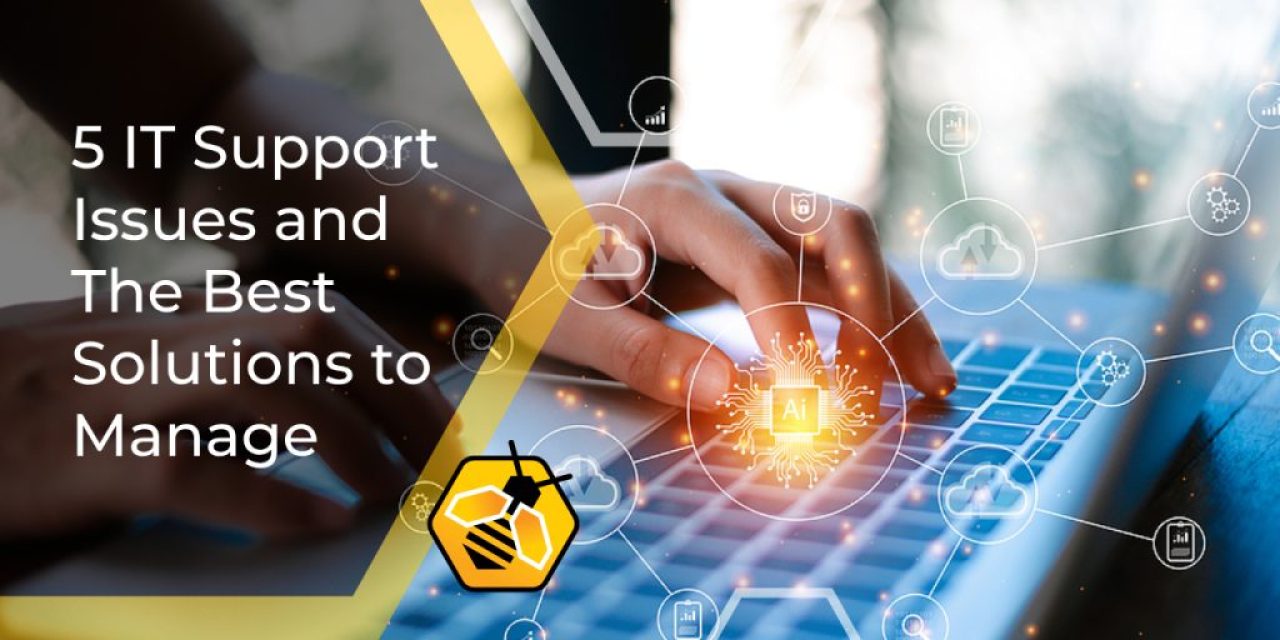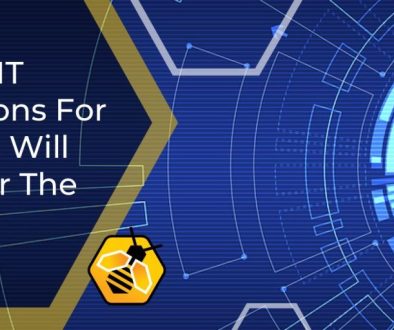5 IT Support Issues And The Best Solutions to Manage Them
Fast and reliable IT systems are now crucial for businesses to survive and thrive, yet with so many new technologies and cyberthreats emerging it is almost inevitable that problems will occur occasionally, or even frequently. This can be anything from a slight nuisance to a significant drain on time and productivity.
Here’s a look at some of the most common technology problems and the best IT solutions.
Poor network connectivity
A strong network connection is crucial to efficient business operations, yet often this can be a frustrating issue that causes delays and disruptions. Users may find that connecting to the internet takes several attempts, web pages are slow to load, the connection drops out intermittently, or even that they cannot connect to the internet at all.
Troubleshooting: the first step is to double check that all the cables are securely connected and undamaged, such as those between routers and booster devices. If they are all present and correct, try restarting the modem or router to iron out any glitches in the software or hardware.
Your computer operating system may have inbuilt diagnostic tools that can indicate specific problems, so step through this to see what it flags up. It may be that your router is simply wearing out or running on obsolete technology and needs to be replaced.
If you cannot find any issues with your IT system, check if the problem lies with your Internet Service Provider. Sometimes, the glitch may be caused by more complex issues that need to be addressed by a professional IT service provider.
Cybersecurity challenges
Cyber threats are a growing issue as criminals constantly develop new forms of malware attacks. These can cause anything from slow systems to regular crashes and irritating pop ups. This not only impacts productivity and performance, but it can also compromise sensitive data.
More seriously, weak cybersecurity can leave your business vulnerable to ransomware attacks or spyware that can seriously damage your business reputation and finances. It could also lead to penalties for breaching data protection regulations.
Good cybersecurity measures include installing antivirus software and keeping it updated; keeping operating systems up to date; training staff about security risks such as how to spot phishing emails and suspicious links; using secure passwords and multi-factor authentication; and regularly backing up data.
Managing complex IT infrastructure
As IT systems become more complex and perform multiple functions, it can be difficult to integrate them smoothly and identify issues. It can also create incompatibilities between different hardware or software, which only come to light when a system update is attempted.
Running older applications can heighten this risk, but it is not always viable for businesses to switch to new systems because their whole operating system is based around older technology. In this case, special support from IT experts might be necessary to keep the legacy system running efficiently, or to oversee a gradual migration to a newer system.
Data backup and disaster recovery
Data loss that occurs through cyberattacks, hardware failure, or disastrous events such as fires or floods can be devastating and even mean the point of no return for small businesses. Therefore it’s crucial to have a well-structured data recovery plan in place, to enable the system to be swiftly restored to its original state.
If you have a large business operation, prioritise the data that is most crucial for recovery first of all. You may choose to work with a managed service provider who has their own data centre, so that you can be confident that your data is stored securely and you can access it immediately in the event of a disaster.
Sluggish computer performance
One of the most common IT complaints heard in offices up and down the country is sluggish computer performance. Unfortunately, this is an issue that could have many causes and it often requires expert investigation to get to the heart of the matter.
Possible culprits might be outdated hardware or software; data overload; lack of memory space; viruses, or browser caches that need clearing. Make sure that all software updates are installed and the devices are scanned for viruses and malware. It may be that the hardware needs to be upgraded or the operating system needs to be reinstalled.




